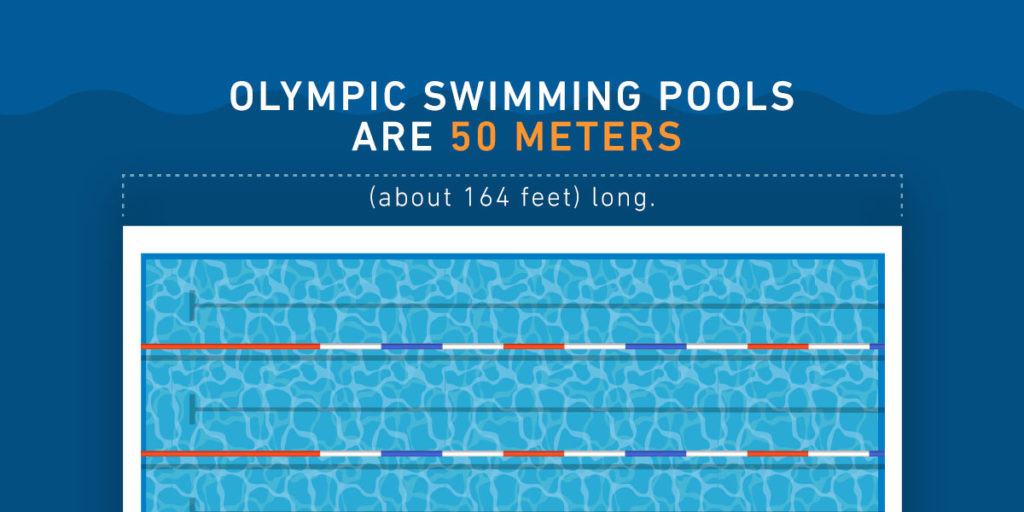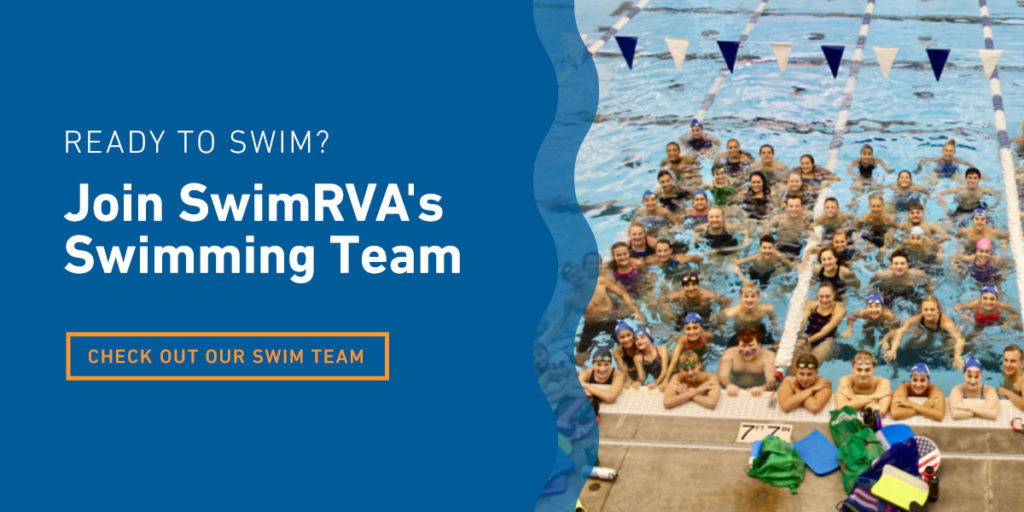Olympic Swimming 2024
Soon, the world’s top swimmers will show their talent and determination on the grandest stage — the 2024 Summer Olympics. Paris will host the Olympics from July 26 to August 11 this year, and the swimming competitions will happen at the Paris La Défense Arena. As anticipation builds, let’s explore all things swimming. Whether you’re a seasoned enthusiast or a curious newcomer, this blog answers your burning questions.
As you celebrate the spirit of competition, community and camaraderie, consider joining a swimming team!
How Long Has Swimming Been in the Olympics?
Swimming has been a cornerstone of the Olympic Games since its beginnings in 1896. Initially, there were only freestyle events, with breaststroke and backstroke competitions added for the 1904 Olympics in St. Louis.
The introduction of butterfly stroke took place much later, debuting at the 1956 Melbourne Games. Women’s swimming joined the Olympic program in 1912. The women’s category originally had only two events but gradually expanded to mirror the men’s events.
Throughout Olympic history, swimming has seen remarkable feats and iconic moments. Legends like Michael Phelps, Mark Spitz and Katie Ledecky have left an indelible mark on the sport.
Swimming at the Olympics has evolved quite a lot. For example, the first races were held in the Bay of Zea at the Athens 1896 Games. Today, swimming competitions are held in state-of-the-art pools. Although much has changed, the thrill of competition and the camaraderie among athletes remain unchanged.
What Are the Swimming Events at the Olympics?
In 2024, there will be 37 swimming events at the Olympics, making it one of the largest categories. Of the 37 events, 18 are dedicated to men and women each, with one mixed event.
Here’s a list of Olympic swim events you can expect to see:
- Freestyle: Freestyle events allow swimmers to use any preferred stroke. Distances range from 50 to 10,00 meters, offering a thrilling mix of sprint and endurance races.
- Backstroke: Swimmers race on their backs, using an alternating arm motion. There are 100-meter and 200-meter races.
- Breaststroke: Breaststroke is characterized by a simultaneous arm motion and a frog-like kick. Olympic breaststroke events include 100-meter and 200-meter distances.
- Butterfly: Known for its distinctive dolphin-like kick and simultaneous arm motion, butterfly events offer an exciting display of speed and power. Distances include 100 and 200 meters.
- Individual medley (IM): The IM events combine all four swimming strokes into one race. Swimmers race 200 meters and 400 meters.
- Relay events: Relay races add an exciting team dynamic to Olympic swimming. Teams of four swimmers compete in relay events, passing a baton to each other to complete the race. Relay events include the 4×100-meter freestyle, 4×200-meter freestyle and 4×100-meter medley.
In addition to these traditional events, the Olympics also feature open-water swimming competitions. These events occur in natural bodies of water and require swimmers to navigate a 10-kilometer course.
What Are the Rules of Olympic Swimming?
Olympic swimming follows a set of regulations designed to ensure fair competition and uphold the integrity of the sport. Let’s briefly discuss the Olympic swimming rules.
Start Rules
Swimmers must start from a stationary position either in the water or from a starting block. False starts can result in disqualification, so athletes must time their starts perfectly to avoid penalties without falling behind.
Stroke Regulations
Olympic swimmers compete in four main strokes — freestyle, backstroke, breaststroke and butterfly. Each stroke has specific rules governing technique and form. For example, in breaststroke, swimmers must perform a simultaneous arm movement followed by a kick where both feet break the water’s surface. Any violations of stroke regulations can lead to disqualification.
Turn Techniques
Turns are crucial in Olympic swimming races and allow swimmers to maintain momentum. Swimmers must perform turns without using the bottom or sides of the pool for help. In freestyle and backstroke, swimmers typically perform flip turns. Breaststroke and butterfly races require swimmers to touch the wall with both hands simultaneously before initiating the turn.
Race Length
Olympic swimming events vary in distance. They can range from sprint races like the 50-meter freestyle to longer endurance events like the 10,000-meter freestyle. Each event has its own set of rules regarding start procedures, stroke regulations and turn techniques.
Lane Etiquette
Swimmers are assigned specific lanes for each race and must stay within their designated lanes throughout the race. Crossing into another swimmer’s lane can result in disqualification.
Understanding the rules for Olympic swimming is essential for athletes and fans alike. By following these regulations, swimmers compete fairly and showcase their skills on the world stage.
How Long Is an Olympic Swimming Pool?

Olympic swimming pools are 50 meters (about 164 feet) long. The standard length provides swimmers with a consistent distance to cover. They can use this distance to calculate their timing and compare their performances across competitions.
An Olympic pool typically holds around 2.5 million liters (about 660,000 gallons) of water. This volume ensures the pool can accommodate many swimmers simultaneously while maintaining proper water depth and quality.
This standard creates a level playing field for swimmers and enhances the integrity of competitive swimming events.
How to Watch the Olympics
To watch the Olympics live, tune in to one of the many Official Olympic Media Rights Holders. Cable subscribers in the United States can watch on NBC and Telemundo. You might also catch some events on the USA Network, Golf Channel, CNBC and E! The NBC Olympics website will also feature opening and closing ceremonies and highlights.
If you don’t have cable, you can access events via streaming services like Peacock, Hulu + Live TV, YouTube TV, Sling TV or fuboTV.
Notable Swimmers to Watch in 2024
Get ready to witness some incredible swimming talent at the 2024 Olympics! Here are a few standout swimmers you won’t want to miss:
- Emma McKeon (Australia): McKeon is a versatile swimmer with a fierce competitive spirit and strong work ethic. This year will be her final Olympics, so she’s poised to leave a lasting impression.
- Katie Ledecky (U.S.): Ledecky is one of the most famous freestyle swimmers in history. She has won multiple Olympic gold medals and World Championship titles, and she’s already dominated the Olympic trials.
- Sarah Sjöström (Sweden): Sjöström is a powerhouse in women’s swimming, with many world records and Olympic medals to her name. Watch out for her electrifying speed and determination in the pool.
- Caeleb Dressel (U.S.): Known for his lightning-fast sprints, Dressel is a force to be reckoned with in the freestyle and butterfly events. Don’t blink, or you might miss his record-breaking swims!
- Leon Marchand (France): Marchand has been making waves and breaking records in the swimming world. Keep an eye on him as he aims for Olympic glory on his home soil.
- Ryan Murphy (U.S.): Murphy has multiple Olympic gold medals and World Championship titles under his belt. In 2016, he broke the world record for the 100-meter backstroke during a 4×100 relay with Michael Phelps, Cody Miller and Nathan Adrian.
Past Swimmer Standouts to Remember
Let’s not forget these legends who left their mark on the sport and became some of the most decorated swimming athletes:
- Michael Phelps (U.S.): Many people consider Michael Phelps to be the greatest swimmer of all time. He holds the record for the most Olympic gold medals (23) and the most Olympic medals total (28).
- Mark Spitz (U.S.): Spitz was a legendary swimmer during the late 1960s and the early 1970s. He won nine Olympic gold medals, including seven at the 1972 Munich Games.
- Jenny Thompson (U.S.): One of the most decorated female swimmers in Olympic history, Thompson has won 12 Olympic medals, including eight gold medals.
- Kristin Otto (Germany): Otto won six gold medals at the 1988 Seoul Olympics. She excelled in freestyle, backstroke and butterfly events.
How to Get Involved in Competitive Swimming
Dreaming of diving into the world of competitive swimming? Here’s how you can take the plunge.
Find a Swim Club
Look for local swim clubs or teams where you can train and compete. SwimRVA offers fantastic programs for swimmers of all levels, including programs for safety, health and sports.
Set Goals
In light of the competition spirit, challenge yourself and set goals. Whether it’s improving your time in a specific stroke or aiming for a podium finish, setting goals will keep you motivated and focused on your progress.
Train Smart
Work with experienced coaches to develop a training plan for your goals and abilities. SwimRVA’s Collegiate School Aquatics Center, which features a pool used in the 2008 Olympic trials, provides world-class facilities to help you reach your full potential.
Stay Dedicated
Success in competitive swimming requires dedication, perseverance and a love for the sport. Stay committed to your training, and don’t be afraid to push yourself to new heights. Stay dedicated!
Ready to Swim? Join SwimRVA’s Swimming Team
As you gear up for the 2024 Olympic swimming events, the anticipation is real. The journey doesn’t need to end with watching from the sidelines. Forge your way into competitive swimming with SwimRVA’s programs in Richmond.
You can realize your swimming dreams with our top-notch coaching and world-class facilities. Whether you’re a beginner looking to take the first stroke or a seasoned swimmer aiming for new heights, SwimRVA offers programs for all levels. Who else can say that future Olympians used their swimming pool during the Olympic trials?
If you’re in the greater Richmond area, be sure to check out our swim team and other programs!
